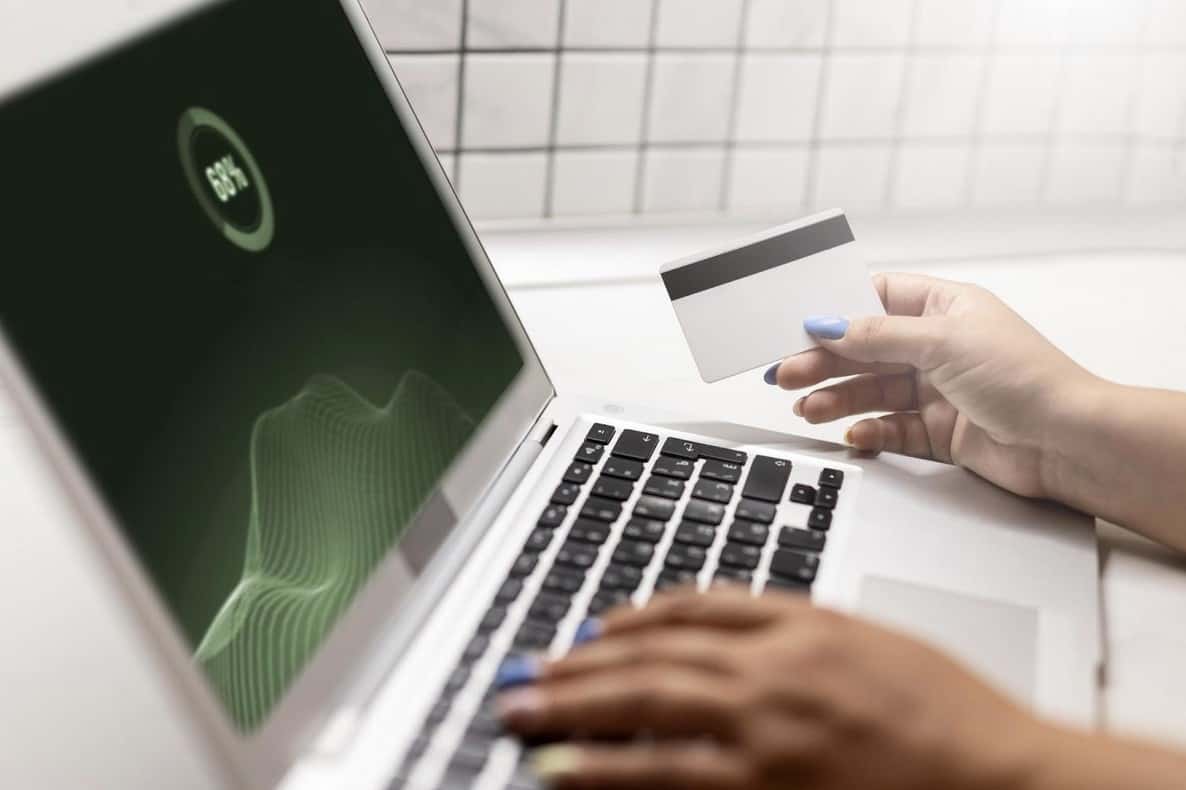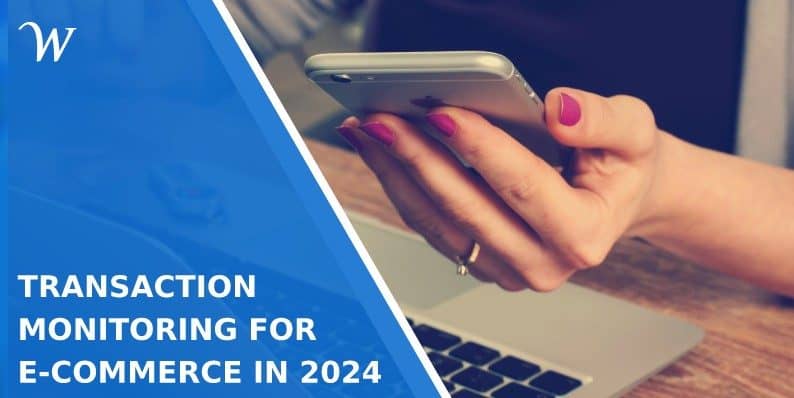Transaction Monitoring for E-Commerce in 2024
In your e-commerce business, every transaction is a big deal. But it’s so easy to overlook the ongoing ones, behind-the-scenes transactions that keep your business going.
You must be wondering, what could go wrong? After all, you’re just one of the 26.5 million e-commerce websites operating, so what are the chances of fraudsters going after yours?
We can never know, but what we do know is that it can happen to anyone. So, instead of underestimating the risk, you should start monitoring your transactions. That said, let’s dive in and see how transaction monitoring can help protect your e-commerce business in 2024.

The need for transaction monitoring
The e-commerce industry has brought many benefits to business owners and customers, but as it continues to grow, so does the risk of fraudulent activities. Every new business and each new transaction that takes place opens up an opportunity for fraudsters to take advantage of.
However, transaction monitoring won’t allow for any suspicious activity to go undetected. The process is simple – monitor your past and present customers’ transactions to make sure there’s nothing to worry about. And if there is, you’ll be timely informed and able to prevent it.
Anyway, here’s what transaction monitoring will help you achieve in the long run:
- Anti-Money Laundering. Your online platform can be vulnerable to different types of schemes, but money laundering can result in huge financial losses. Thankfully, AML transaction monitoring rules can help prevent everything from identity theft to more serious crimes like money laundering. It will protect your money and assets. Everything you’ve worked for your whole life.
- Enhance customer trust. You’re the boss, but customers have the power to make and break a business. By showing them that you’re safely handling their transactions and sensitive information, you’ll enhance their trust and secure your business’s success.
- Regulatory compliance. Like in every other sector, regulatory bodies have implemented strict rules that e-commerce businesses must adhere to. Transaction monitoring helps you stay on the right side of the law so you can avoid legal troubles.
Cybercriminals go where the money is. There’s no way you can stop them from trying to attack your business, but there’s a way to stop them from succeeding. This is called transaction monitoring – a method that every e-commerce business can benefit from, especially nowadays.
Transaction monitoring will make sure the payment goes through, that is, there are no technical issues. It will inspect the customer’s past and current identity to see if they’re legitimate, as well as document each transaction information so that you don’t fall victim to chargeback fraud.
Key components of effective transaction monitoring
Transaction monitoring is all about solving more problems with one simple solution. And before you think you’re well-prepared and don’t need it, you’d want to know that younger people, who are certainly more active on e-commerce platforms, report losing money to fraud more often than older people do. Now, let’s take a look at the key components of transaction monitoring.
Real-time monitoring
No matter how familiar you are with the transactions within your e-commerce business, there’s no way you can monitor them all as soon as they take place. But this component of transaction monitoring, called real-time monitoring, can. It will analyze transactions immediately so you can identify and respond to any suspicious fraudulent activity in a timely manner.
You’ll be able to stay one step ahead of fraudsters as real-time monitoring is active 24/7. The software has its own set of rules, so if a transaction doesn’t align with the expected safety pattern, it will trigger an alert so you can further investigate.
It’s important to note that there are also more advanced, customizable software that will let you create your own rules based on your e-commerce business needs and evolving patterns of fraud. This is how you’ll be able to detect even the fraudsters’ newest tactics.
Machine learning and AI
There’s a lot that machine learning and AI can do for transaction monitoring systems. But before we get into it, stop for a second and think about how transaction monitoring looked like in the past. Humans manually reviewed transactions, and the risk of false positives was a lot higher.
Here’s what this process looks like nowadays, thanks to machine learning and AI:
- Adaptive pattern recognition. Fraudsters don’t always play the same card. They’re sneaky but smart individuals who adapt their tactics. But the power of machine learning lies in its ability to learn from itself, so it can easily recognize new patterns.
- Predictive analysis. Since it can remember and learn from historical data, machine learning can predict future transactions. Simply put, it knows how much money a person spends and when, so it’ll immediately raise suspicion if they spend more than usual.
Not all transaction monitoring software is based on machine learning and AI. While some have integrated them, some rely on rule-based systems to identify suspicious transactions. But regardless of what powers them, transaction monitoring systems are far more effective than traditional manual methods.
Risk assessment
Oh, we’re still not done discussing the potential risks in e-commerce businesses. You see, there’s a certain level of risk with each transaction, and as a business owner, you must understand each in order to keep your operations safe.
This is why risk assessment is important, but how does it work?
Transaction monitoring systems consider different factors, all revolving around the money – the amount, who’s involved, and how often these transactions occur to give them a risk level.
Naturally, high-risk transactions will get extra attention. A high-risk transaction would be, for example, when a person who never made a purchase larger than $100 in the past is suddenly trying to spend $5,000 with a credit card. It can be a false alarm, but it will be triggered anyway.
Regardless of how it turns out, the risk assessment benefit of transaction monitoring can help you focus on transactions with higher risks, those that are likely to involve fraud.
Behavioral analytics
As already mentioned, the transaction monitoring system creates a profile for each user. It knows how much they usually spend, where in the world they make most of their purchases, as well as the frequency of their transactions. So, this is the pattern the software is used to, and any deviations from it will trigger an alert for further investigation.
The software would find suspicious any of the following anomalies:
- If a user who always made smaller purchases suddenly attempts to make a larger one.
- If a user attempts to make a purchase from an unfamiliar location.
- If a user who always made a purchase at a specific time of day now does so during an unusual time.
- If a user suddenly makes a purchase from a new device.
Sure, these could be normal occurrences for some, but due to the many types of online fraud associated with e-commerce businesses, you shouldn’t take a chance. Better safe than sorry, right?

Challenges in implementing transaction monitoring
It’s only natural for such an advanced technology like transaction monitoring to come with certain challenges. There’s no need to worry, as they don’t overcome the benefits but are worth mentioning so you can better understand what you’ll be dealing with.
- False positives. Sometimes, the transaction monitoring software can identify a legitimate transaction as a fraudulent one. So, if you continue to investigate the customer, they’ll likely get irritated, and there’s always the possibility of losing them.
- Adapting to different regulations. The regulations and laws associated with financial transactions are prone to frequent changes and can vary among jurisdictions. The not-so-advanced software might find it harder to adapt to these changing regulations.
- Data overload. While transaction monitoring systems operate just fine, sometimes, the sheer volume of data can overwhelm them. This can lead to delays in processing and responding to potential threats.
These challenges are simply something to be aware of, not something to stop you from implementing transaction monitoring. After all, falling victim to fraud and losing a substantial amount of money is far worse than all of the above-mentioned occurrences.
Securing e-commerce transactions
If you’re already a part of the e-commerce world, then you must become part of transaction monitoring. I can’t even stress enough how important it is to safeguard your business.
Fraudsters are lurking around the corner and waiting for the first opportunity to attack, so you better start thinking about taking action. After all, we’re talking about money and sensitive information that could fail in scammers’ hands, and that scenario doesn’t suit anybody – not you and not your customers.
Makedonka Micajkova is a freelance content writer and translator, always bringing creativity and originality to the table. Being multilingual with professional proficiency in English, German, and Spanish, it’s needless to say that languages are her biggest passion in life. She is also a skilled communicator, as a result of having three years of experience as a sales representative. You can find her on Linkedin.
- Video Trimmer That Lets You Rearrange Scenes Instantly - November 11, 2025
- WPBulky vs Bulk WP (2025): Which WordPress Cleanup Tool Should You Use? - October 9, 2025
- How to Compare Internet Speeds and Plans Before Switching ISPs - August 7, 2025
Where Should We Send
Your WordPress Deals & Discounts?
Subscribe to Our Newsletter and Get Your First Deal Delivered Instant to Your Email Inbox.



